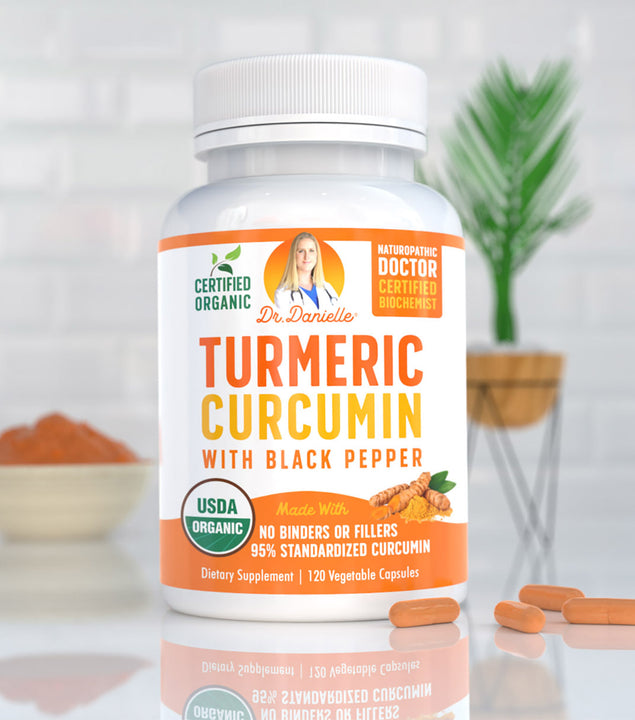Junk food. Absolutely loaded with artery-choking saturated fat, blood-pressure-raising sodium, and an eye-watering number of calories … but so frustratingly irresistible. But is giving in to the urge to cram 30 potato chips into your mouth (in one sitting) — despite knowing they're harmful to your health — a sign of your shortcomings? That you're weak, undisciplined, and self-indulgent? Not really. The truth is that food companies painstakingly engineer ultra-processed foods to activate the reward system in your brain the same way as addictive drugs, including cocaine and tobacco (1, 2, 3, 4).
Thankfully, you're not completely powerless against the "charms" of dopamine-releasing junk food. Here are seven things you could do to stop that got-to-have-those-fries-now! cravings in their tracks.
#1: Load up on satiety-promoting foods during meals
When your stomach's growling and you're downright ravenous, would you go for a salad? Or would you go for a sloppy cheeseburger with a side of fries? Yeah. Same. In fact, research says elevated cravings for ultra-processed foods during hunger are normal (5). But wait. How can you prevent hunger? Especially during the much-dreaded mid-day slump, right between lunch and dinner? An excellent place to start is building your meals around high-volume, satiety-promoting foods, like:
- Protein: The most satiating macronutrient (i.e., compared to fat and carbohydrates) (6). According to a 16-week study published in The Journal of Clinical Endocrinology and Metabolism, individuals consuming a high-protein diet reported greater post-meal satiety than those consuming a standard protein diet (7). As for how much protein you should eat, a general guideline to follow is anywhere between 0.8 to 1.32 grams of protein per pound of body weight (or 1.8 to 2.9 grams of protein per kilogram of body weight) (8).
- Fiber-rich foods: Beyond bulking food volume without adding a ton of calories, dietary fiber has also been shown to enhance satiety by increasing the time it takes for food to empty from your stomach (9, 10). Examples of high-fiber foods you could add to your diet to enhance satiety include whole grains (e.g., whole oats and brown rice), cruciferous vegetables (e.g., broccoli and brussels sprouts), legumes (e.g., lentils and peas), and fruits (e.g., apples and bananas).
#2: Stick to a regular eating schedule
While satiety-promoting foods can lengthen the time you go without feeling hungry, they cannot keep you full forever. In most cases, you’d still feel your stomach start to rankle for food after a few hours. The important thing is that you nip that fledgling hunger in the bud before it transforms into an unstoppable force. How? By sticking to a relatively regular eating schedule where you don’t go longer than five hours or so without eating (i.e., don’t skip meals). Otherwise, your blood sugar levels could plummet — and research shows that's typically when you'd find yourself most susceptible to food cravings (11, 12, 13).
Oh, and just so you know, sticking to a regular eating schedule isn’t only good for preventing food cravings. There’s also solid evidence that it could help lower your risk of several chronic diseases, including obesity, type 2 diabetes, and cardiovascular disease (14). What a deal.
#3: Identify your triggers and break the cycle
The next time you find yourself hankering for a bag of potato chips, golden-brown donuts, or chocolatey brownies, think about the following:
- How you’re feeling (e.g., sad, stressed, or angry)
- What you’re doing (e.g., chilling on the sofa)
- Who you’re with (e.g., your college friends)
Specific emotions, activities, and individuals may trigger your food cravings (15, 16, 17, 18). And identifying what your triggers are is the first step to breaking the cycle. For example, let's say food cravings hit you particularly hard in times of stress. Once you know that, you can take active steps to reduce your stress levels (instead of mindlessly stuffing your face), like exercising, meditating, or taking a stress-busting supplement like Dr. Danielle’s Stress Lift (19).
#4: Make it inaccessible
Let's say you're working from home. Which scenario would see you finish a jar of chocolate candies first: when it's placed on your desk, right in front of you, or in your kitchen? Chances are, it'll be the first. The more accessible those creamy, milky chocolate candies are, the more tempted you'd be to reach over and pop one into your mouth. A 2017 study published in PLOS One agrees (20). Here, the researchers randomly assigned participants into two groups:
- Distal, where the food was situated at least 20 feet (or 6 meters) away
- Proximal, where the food was located at an arm's length
Guess what the researchers found after a 60-minute duration? Yep. Participants in the proximal group consumed larger amounts of food — particularly chocolate — than those in the distal group. Takeaway? If you're trying to stop cravings for junk food, the adage, "Out of sight, out of mind" holds true. So try your best to keep those tempting foods out of your eye line.
#5: Get enough high-quality sleep
How’s your sleep? Because if you’re getting less than seven hours of good-quality ZZ’s nightly, science says you’re way more (like, way more) vulnerable to food cravings (21, 22). That’s because sleep deprivation does two things to you:
- Increases ghrelin levels and decreases leptin levels (23, 24): FYI, ghrelin is also known as the "hunger hormone", while leptin is known as the "satiety hormone". So, imagine what a simultaneous increase in ghrelin and decrease in leptin levels do to you. That's right. You'll feel so much hungrier — all the time. Cue food cravings.
- Sends your olfactory system (or, simply put, nose) into overdrive: A 2019 study published in Neuroscience found evidence that sleep deprivation makes your brain more susceptible to enticing food smells, like from the local donut shop on your way back home after work (25).
The solution? Sleep more. Of course, that's often easier said than done. So, here are a couple of sleep hygiene tips you could put into practice: stick to a consistent sleep-wake schedule, avoid using electronic devices in bed, stop caffeine intake at least six hours before sleeping, and make sure your bedroom is dark, quiet, and at a comfortable temperature (26, 27, 28). And, if after all that, you're still struggling to drift off, you could consider sleep aids like chamomile tea, magnesium supplements (e.g., Dr. Danielle’s Zenbliss), or melatonin (e.g., Dr. Danielle’s Sleep Bliss) for that little bit of extra help.
#6: Take care of your gut health
It's only natural to assume that your food cravings originate from the brain, but recent research suggests that you might want to cast your eye a little further down to your gut. Take this 2019 randomized controlled trial published in Nutrients, for example (29). The researchers found that participants who drank a milkshake enriched with inulin-propionate ester — note: propionate is a short-chain fatty acid typically produced by “good” gut bacteria — rated high-calorie foods as less appealing. This, in turn, supports a past 2014 paper’s hypothesis that a diverse and balanced microbiome would minimize the frequency and intensity of food cravings (30).
Wondering how you could improve your gut health? These will help get you started (31, 32, 33, 34, 35):
- Eat a diverse range of foods, with lots of whole grains, vegetables, legumes, beans, and fruit, plus some fermented foods
- Limit your consumption of inflammatory processed foods, red meats, and alcohol (gut inflammation is the precursor to intestinal permeability or leaky gut syndrome)
- Consider “good”-gut-bacteria-promoting Probiotics and supplements that care for your gut lining (e.g., Dr. Danielle’s Gut Assist)
#7: Don’t restrict yourself
Don’t think about polar bears. Quick, what's on your mind now? White fur, large paws, black nose — yep. Polar bears. Drawing a parallel to food cravings … as it turns out, science says the more you tell yourself junk food is off limits, the more likely you'd think about it (and more intensely).
On the other hand, surprisingly, giving yourself permission to eat what you crave often leads to a balanced diet without food fixation. This is explained in research by the phenomenon of habituation: the more exposed you are to a food, the less interested you become in it (36). Find that hard to believe? Then this 2011 study published in The American Journal of Clinical Nutrition could help change your mind (37). The researchers randomly assigned participants into two groups:
- The first group was presented with mac and cheese once a week while
- The second was presented with mac and cheese daily
After five weeks, the researchers found that the second group consumed less mac and cheese than those who only got it once a week. Bottom line? You don't have to eliminate junk food from your diet. Making allowances for some highly enjoyable, ultra-processed foods could make it easier to stick to an overall healthy eating plan in the long term.
Know when it’s time to seek professional help
If food cravings show zero sign of abating even after implementing all tips outlined above, and they’re:
- Making it hard for you to function optimally in life,
- Causing you immense stress, guilt, and anxiety,
- Paving the way to disordered eating patterns (e.g., binge eating, self-induced vomiting, and skipping meals)
Don’t be afraid to reach out to health professionals who could help you, such as nutrition coaches, registered dietitians, and psychiatrists.








